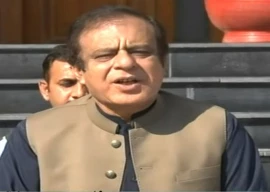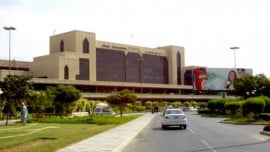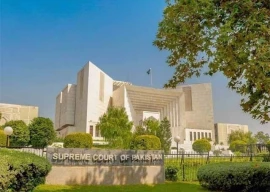
Karachi is consuming more and more energy and emitting more and more greenhouse gases every day. The city needs to cycle its way out of this harmful trend.
There is no doubt that heavy dependence on fossil fuels, such as coal, natural gas and oil, as sources of energy production is increasing the challenge of climate change. And one of the ways to reduce these burdens is to discourage the use of private automobiles and encourage the use of public transit options, bicycling and walking.
Benefits of cycling
Cycling is one activity that has the least opposition. It has significant positive benefits for a person’s health, as well as for the general environment. A person on a bicycle gets healthier with every mile that he or she rides, reduces the chances of traffic injuries to others, and does not pollute. As a mode of transport, cycling requires substantially less public space; bicycle lanes only take as much space as a sidewalk, even smaller parking space.
Why cycle?
According to the Ministry of Finance, the energy crisis is the largest single drain on Pakistan’s economy, shaving off up to two percentage points from the annual gross domestic product growth in the country. The largest burden on the energy sector comes from the excessive number of automobiles on the country’s roads, most significantly in Karachi.
The city has no decent public mass transit systems and has, by far with a wide margin, the highest number of private automobiles in the country. These vehicles are not effectively regulated with obvious consequences on energy consumption and emission of greenhouse gases.
There is a definite need to assess the potential of, for example, promoting the use of bicycles within the city. A baseline research was recently carried out by three fourth-year architecture students of the Indus Valley School (IVS) - Dawood Akbar, Mehreen Kazim and Zainub Khan. They found some encouraging signs in the presence of a local initiative, the Critical Mass Society, which is a group of dedicated cyclists who gather regularly for excursions in various parts of the city.
During their research interviews, the IVS students learned that the number of cyclists who join the critical mass has increased three folds since they started. They group claims that people in Karachi want to cycle, they just don’t know where to and how, due to the lack of required infrastructure. The social stigma associated with bicycling is also a major deterrent. In addition, sadly, many Pakistanis associate bicycling with poor living standards.
Bike-sharing system
Despite the hurdles, cycling advocacy is happening particularly in urban and semi-urban areas. To take the idea to a bigger level, policy, administrative and legal changes must be made. Better cycling infrastructure, such as road and junction designs, and the creation of cycle lanes parking spots, must be built. Critically important is public education regarding the health, transportation and environmental benefits of cycling, for both individuals and the urban environment at large.
The research work conducted by the IVS students recommended that a bike-sharing system can be very useful, in which anyone can join a community of bike sharers. One such experiment is being carried out by Citibank in New York City, where you pay a certain amount of money to rent a bike and get dropped at any of the designated points throughout the city. The students also recommended placing shaded spots as spaces for rest.
These ideas seem easy to implement but, when it comes to Karachi, there are some fundamental errors in its planning and road networking and infrastructure, illegal encroachments that make promoting a bicycling culture throughout the city a hugely challenging task.
Nevertheless, pilot projects can be initiated to test out potentials and constraints with a city-wide implementation project. Bicycle access zones can be established in which vehicles will be restricted and only bicycles will be allowed. Some areas that can be taken up as case studies may include Zamzama and DHA’s Khadda Market, where parking provisions can be made for cycles and vertical parking lots can be employed.
A positive aspect is that many initiatives can be taken purely at the level of the civil society and they can then hopefully be owned and promoted by the city government.
The writer is an urban planner and runs a non-profit organisation based in Karachi city focusing on urban sustainability issues. He can be reached atfanwar@sustainableinitiatives.org.pk
Published in The Express Tribune, September 1st, 2014.
COMMENTS (1)
Comments are moderated and generally will be posted if they are on-topic and not abusive.
For more information, please see our Comments FAQ






















































How is the cyclist safety ensured with such chaotic traffic with no regard to traffic rules let alone pedestrians and cyclist right of way.